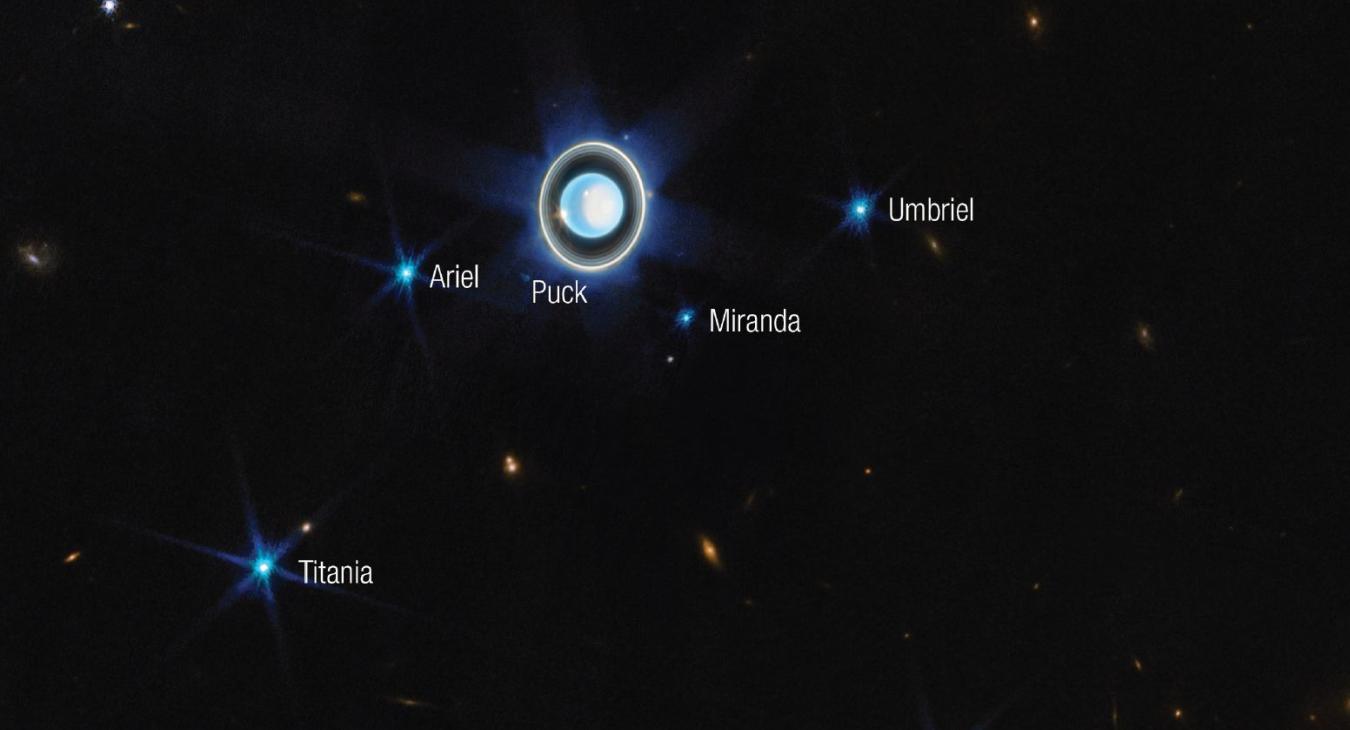Uranus, with its system of thin rings and several of its moons, as imaged by the James Webb Space Telescope on February 6, 2023.
COURTESY NASA/ESA/CSA/SPACE TELESCOPE SCIENCE INSTITUTE/JOSEPH DEPASQUALE
The planetary show we’ve been enjoying in the evening sky since the latter part of 2023 still has a few more months to run but loses one of its main performers during February. The ringed planet Saturn is already low in the southwest as darkness falls during the early part of the month and disappears into the twilight by month’s end.
Meanwhile, Jupiter is high in the western sky at the end of dusk and sets an hour or so before midnight. Trailing along about an hour behind Jupiter—and located somewhat to the southwest of the prominent dipper-shaped Pleiades star cluster in Taurus—is the distant planet Uranus. It can be glimpsed with the unaided eye from dark rural sites and be detected with ordinary binoculars from most other locations. Uranus and Jupiter are slowly approaching each other in the nighttime sky and will have a conjunction with each other in late April.
Our morning skies this month are relatively free of planets. Venus has dominated the morning hours for the past few months, but lately has sunk lower to the horizon. At the beginning of February, it rises around the beginning of dawn. As Venus continues its descent, Mars is going in the opposite direction. Mars begins a slow climb into the morning sky, and on the morning of Thursday, February 22, the two worlds will pass by each other in a rather close conjunction. This event, unfortunately, will take place deep in twilight and will not be especially easy to see.
Several bright stars and prominent constellations inhabit our evening skies this time of year. Chief among these is the constellation Orion—representing the famous hunter from Greek mythology. Its two brightest stars are Rigel, marking the hunter’s western knee; and Betelgeuse, marking the hunter’s eastern shoulder. Betelgeuse forms a nearly equilateral triangle, often dubbed the winter triangle, with two other bright stars: Procyon to its east and Sirius—the brightest star in the entire nighttime sky—to its southeast. Sirius is the primary star of the constellation Canis Major—the “Big Dog”—and accordingly is often nicknamed the “Dog Star.”

